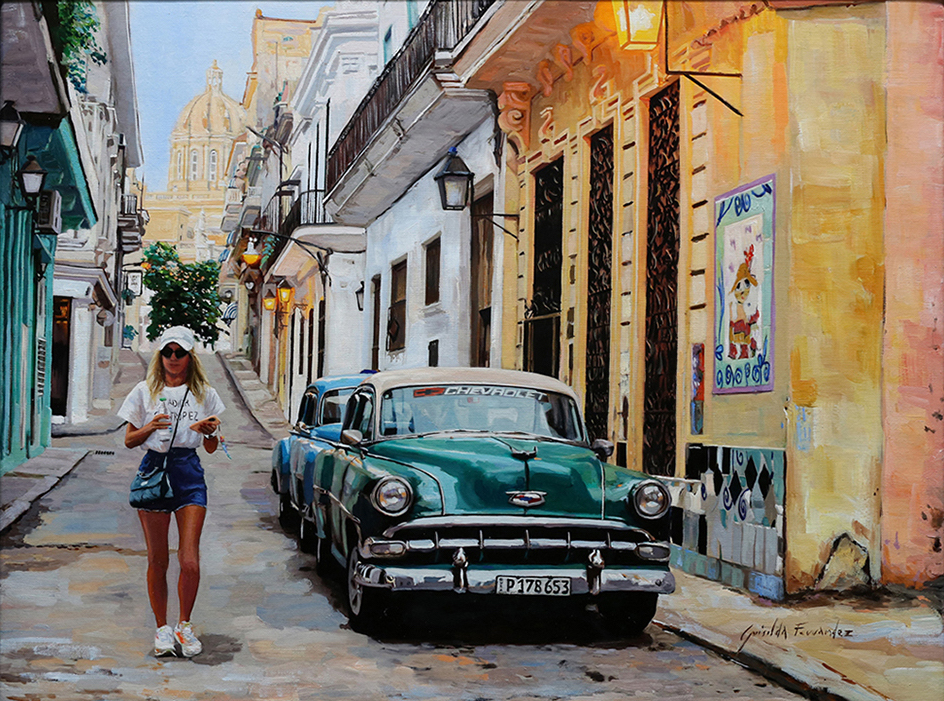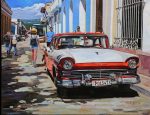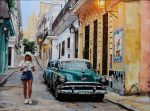Griselda Ferrandez was born in the city of Barcelona, a cosmopolitan and open city. From her balcony she could contemplate the sea as well as watch the passing freight trains on their way to the mercantile port. At a young age, Griselda was bedridden from heart disease that left her with only books and her balcony view to pass the time. She remembers looking through books of painters and loved the way paintings transported her to a world of fantasy through color and line.
This early impression led her to want to become a painter herself. From 1972 to 1975 she studied at the Massana Official School of Arts and Crafts in Barcelona, considered at that time an avant-garde art school. At the age of 18, she began to work in the painting studio where Spanish hyperrealist artist Jesus Navarro served as the artistic director. They later fell in love, married, and had 3 children. She proudly describes each child as gifted in the arts as well.
Since her first exhibition in 1978, Ferrandez has not stopped painting or experimenting with paint. For a time, she even taught classes on Art Theory at the Tres en Raya school in Castelldefels, Barcelona. She has worked with pastels, acrylic, marble dust, oil, organic matter, collage, but throughout her experimentations, oil paint has always been her favorite, a material she describes as the “noblest and most multifaceted.”
Her new series of painting she describes as Realism framed in Pop Aesthetic. Utilizing the bold colors and lines of advertising and marking as the backdrop, she positions her female figures as oblivious to the world around them. She describes her her work as in many ways, a love letter to city life and her female figures as a mirror image to daily life. Artistically, in this new series she is inspired by the tensions between the lines that create the composition and emotive connotations of each form: wavy(soft, freedom, harmony…), horizontal(peace, rest, calm). Through these works she can challenge herself through the various technical as well as psychological questions that arise wen combining different forms of art, the underlying questions that remain when working in realism, abstraction, as well as pop.




